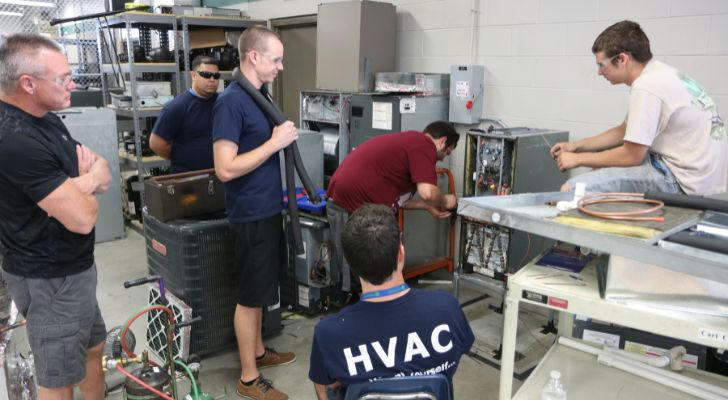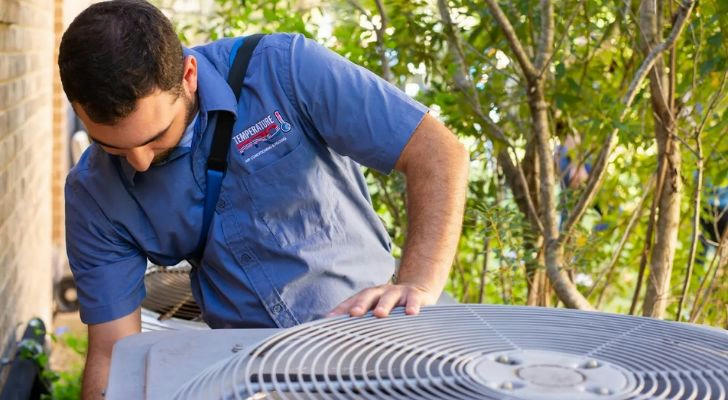Vocational School vs Apprenticeship: Which HVAC Career Path Is Better?
Choosing the right path to become an HVAC (Heating, Ventilation, and Air Conditioning) technician is a critical step in launching a successful skilled trade career. Two common routes—vocational school and apprenticeship—each offer distinct advantages. But which one fits your learning style, timeline, and career goals better? Understanding how each pathway works will help you make an informed decision and start your HVAC journey with confidence.

Understanding the Two Paths
Before comparing benefits, let’s clarify what each path entails.
Vocational School
Vocational or trade schools offer formal classroom-based education. These programs typically last between 6 months and 2 years, providing structured lessons in HVAC theory, safety, tools, and system operation. Many schools also include hands-on training in mock environments or labs.
Apprenticeship
An apprenticeship combines paid on-the-job training with classroom instruction. Apprentices work under licensed HVAC professionals while attending classes in the evenings or on weekends. Most apprenticeships last 4 to 5 years, gradually increasing wages and responsibility as skills grow.
Cost and Financial Considerations
One of the first questions many students ask is: How much will this cost me?
Vocational School
- Tuition: Programs can range from $3,000 to $25,000 depending on the school and program length.
- Financial Aid: Federal financial aid, scholarships, and grants are often available.
- Upfront Investment: Higher initial cost, but shorter duration means faster entry into the workforce.
Apprenticeship
- Cost: Often low-cost since many are sponsored by unions or employers.
- Earn While You Learn: Apprentices are paid hourly, starting at around 50-60% of a full technician’s wage.
- Tools and Supplies: May be covered by employer or union.
If budget is a major concern, apprenticeships offer a more financially accessible path.
Learning Style and Environment
Think about how you learn best—this can heavily influence your success.
Vocational School
- Ideal for those who prefer structured instruction and classroom learning.
- Faster-paced, with a clear timeline to graduation.
- Often includes preparation for EPA 608 Certification and job placement support.
Apprenticeship
- Best for hands-on learners who thrive in real-world environments.
- Learning happens on job sites under the guidance of mentors.
- Skills are built gradually, often alongside seasoned technicians.
If you prefer learning by doing and can commit long-term, an apprenticeship offers unmatched field experience.
Time Commitment and Speed to Employment
Speed matters—especially if you're changing careers or supporting a family.
Vocational School
- Shorter duration: 6–24 months on average.
- You may start working as a junior technician or helper immediately after certification.
- Suitable for fast-tracking into the industry.
Apprenticeship
- Takes longer: 4–5 years to complete.
- However, you start earning right away and progress steadily.
- Many apprentices are hired permanently by the companies they train with.
Choose vocational school for speed; choose apprenticeship for long-term skill development.

Career Growth and Industry Recognition
Both paths lead to full-time HVAC careers, but their recognition and advancement potential can vary.
Vocational School
- Graduates typically begin as HVAC helpers or junior techs.
- Further experience is required before advancing to journeyman or master tech levels.
- Employers may prefer candidates with both school and field experience.
Apprenticeship
- Leads directly to journeyman status, a respected industry credential.
- Easier pathway to union membership and government/commercial projects.
- Often includes licensing preparation and higher long-term earning potential.
For those aiming at union work, large projects, or business ownership, apprenticeships provide a solid foundation.
Real-World Example
Jake, age 29, was working retail before deciding to pursue HVAC. He chose vocational school because he wanted a quick transition. Within 10 months, he was EPA-certified and working full-time. On the other hand, Luis, 22, preferred to learn by shadowing experienced professionals. He joined a 4-year apprenticeship through a local contractor and is now in year 3, earning while he learns and working toward his journeyman license.
Both paths work—what matters is choosing what fits you.
Final Thoughts
There’s no one-size-fits-all answer when it comes to choosing between vocational school and apprenticeship for an HVAC career. Each path has unique advantages. If you're eager to enter the workforce quickly and prefer classroom learning, vocational school might be right for you. If you're more comfortable learning on the job and can commit to a longer-term plan, an apprenticeship can provide deeper field experience and long-term rewards.
Either way, HVAC is a growing industry with strong demand, competitive pay, and opportunities for advancement. Choose the path that aligns with your goals—and start building a hands-on, future-proof career.
